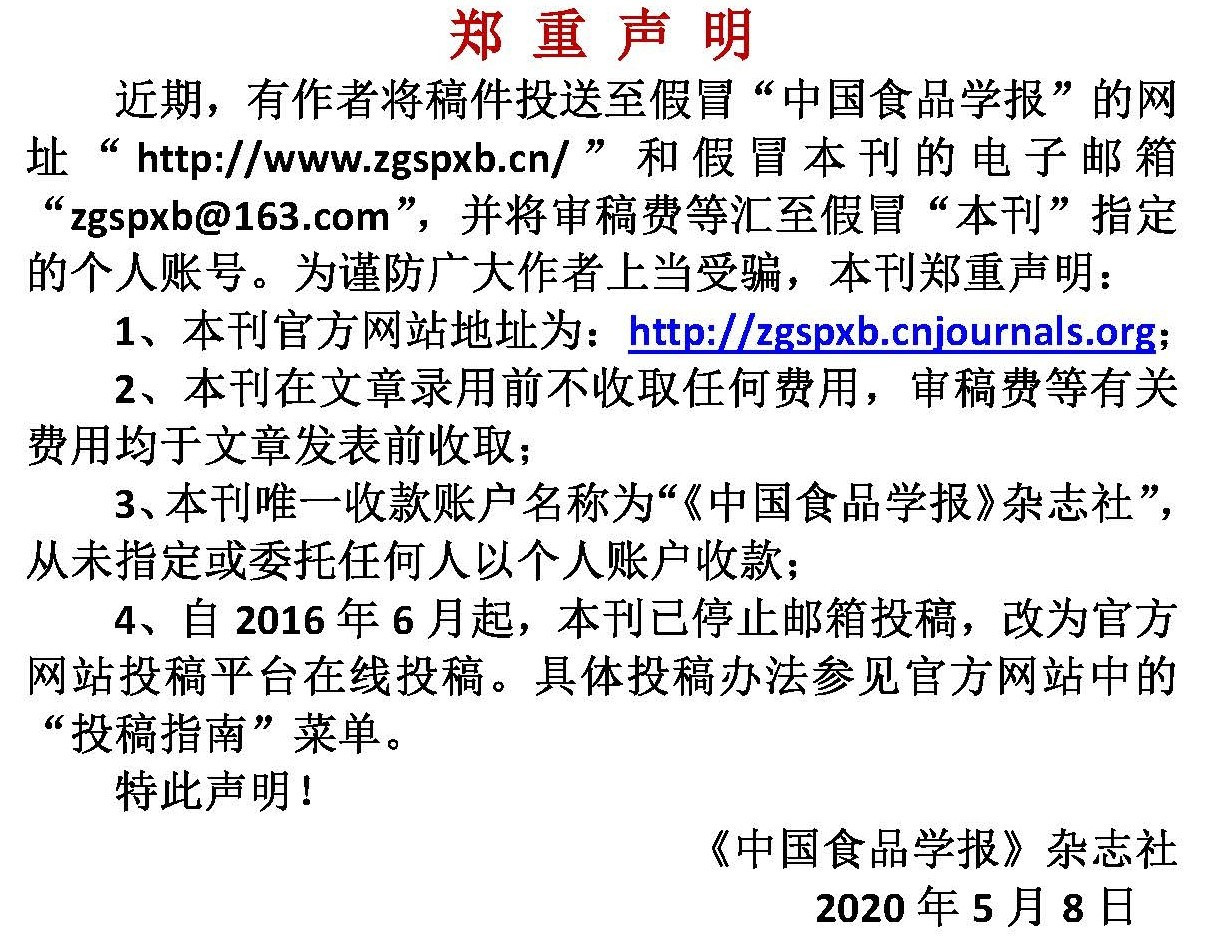不同环境温度条件酿制的传统黄酒的滋味特征差异分析
作者:
作者单位:
(上海应用技术大学香料香精化妆品学部 上海 201418)
作者简介:
通讯作者:
中图分类号:
基金项目:
国家自然科学基金面上项目(32172336)
Analysis of Taste Characteristics of Traditional Huangjiu Brewed under Different Ambient Temperature Conditions
Author:
Affiliation:
(School of Perfume and Aroma Technology, Shanghai Institute of Technology, Shanghai 201418)
Fund Project:
引用本文
于海燕,吴世琪,王晓雨,陈臣,田怀香.不同环境温度条件酿制的传统黄酒的滋味特征差异分析[J].中国食品学报,2024,24(4):361-369
复制分享
文章指标
- 点击次数:
- 下载次数:
- HTML阅读次数:
历史
- 收稿日期:2023-08-12
- 最后修改日期:
- 录用日期:
- 在线发布日期: 2024-05-24
- 出版日期:
版权所有 :《中国食品学报》杂志社 京ICP备09084417号-4
地址 :北京市海淀区阜成路北三街8号9层 邮政编码 :100048
电话 :010-65223596 65265375 电子邮箱 :chinaspxb@vip.163.com
技术支持:北京勤云科技发展有限公司
地址 :北京市海淀区阜成路北三街8号9层 邮政编码 :100048
电话 :010-65223596 65265375 电子邮箱 :chinaspxb@vip.163.com
技术支持:北京勤云科技发展有限公司
